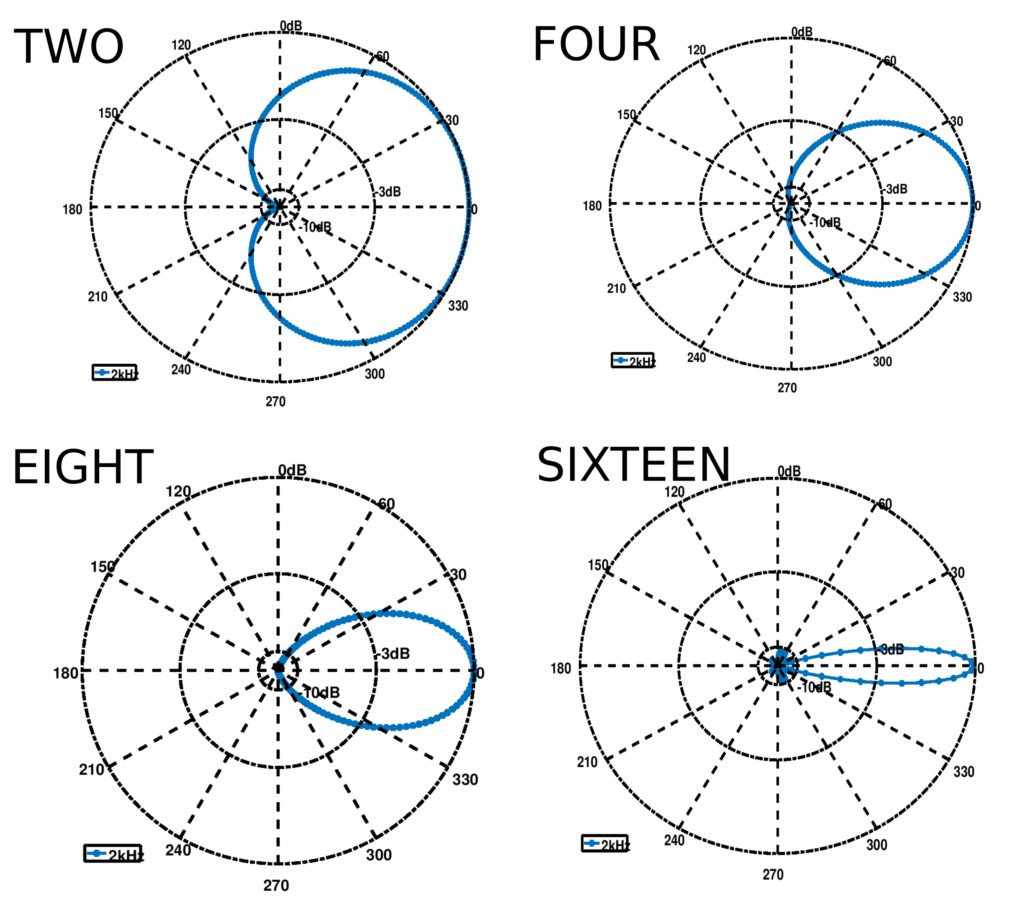An order differential beamforming can be utilized to for an endfire beamformer with arbitrary beamwidth by cascading
first order differential beamformers together to synthesize a single output.Consider N microphone array as shown in Figure 1:
Figure 1: N microphone array
Instead of performing each first order differential beamformer, it can be shown that each output can be multiplied by a coefficient which follows a binomial expansion pattern. A first order beamformer is obtained by , where
is the output and
is the input from the microphone
all in frequency domain. It is easy to show that for an
order beamformer, the output will be:
where
.
Figure 2 illustrates the differing output beam patterns using different orders but identical settings such as sampling rate and consecutive microphone distance. The effective beam-patterns for a frequency of is shown in Figure 2 to illustrate spatial noise suppression.
Figure 2: Theoretical spatial filtering beam patterns.
VOCAL Technologies offers custom designed solutions for beamforming with a robust voice activity detector, acoustic echo cancellation and noise suppression. Our custom implementations of such systems are meant to deliver optimum performance for your specific beamforming task. Contact us today to discuss your solution!

